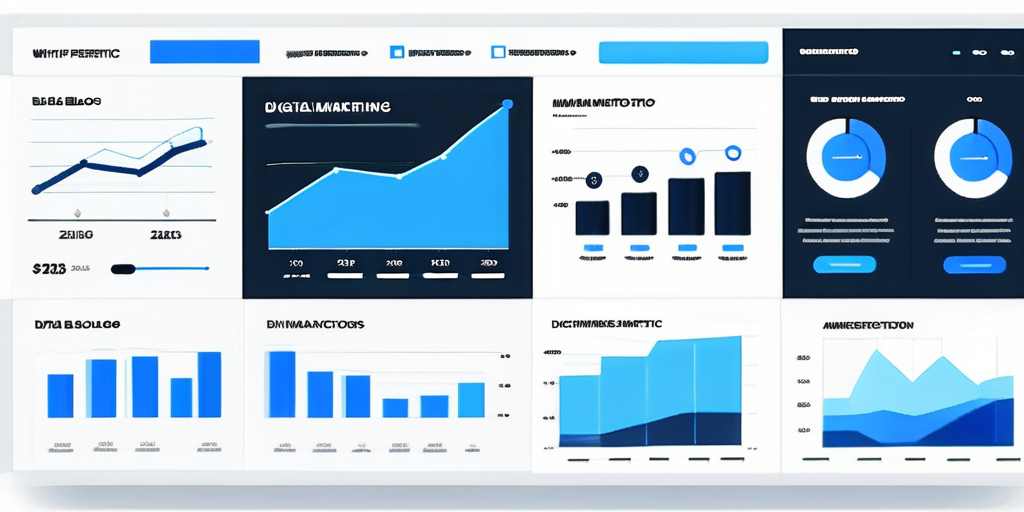Measuring Social Impact Metrics in Digital Marketing: A Comprehensive Guide

In the world of digital marketing, it’s not enough to simply create and execute successful campaigns. Marketers must also be able to measure and evaluate the impact of their efforts. This is where social impact metrics come into play. By tracking and analyzing the data, marketers can better understand their audience, make informed decisions, and drive meaningful results for their brands.
Understanding Social Impact Metrics
Before delving into the intricacies of measuring social impact metrics, it’s important to have a clear understanding of what they are and why they matter. Social impact metrics refer to the quantifiable measures used to assess the outcomes and effectiveness of digital marketing efforts on social platforms.
These metrics serve as the key indicators of success and allow marketers to gauge the performance of their campaigns, identify strengths and weaknesses, and make data-driven decisions. They provide valuable insights into the engagement, reach, and influence of a brand’s online presence.
Definition and Importance of Social Impact Metrics
Social impact metrics encompass a wide range of measurements, including likes, shares, comments, click-through rates, conversion rates, and more. These metrics highlight how well a brand is connecting with its audience and whether its efforts are generating desired actions and outcomes.
The importance of social impact metrics cannot be overstated. They enable marketers to evaluate the effectiveness of their digital marketing strategies and identify areas for improvement. By measuring these metrics, brands can optimize their campaigns, increase engagement, and drive tangible results.
Key Social Impact Metrics in Digital Marketing
When it comes to measuring social impact metrics, there are several key metrics that marketers should pay close attention to. These metrics include:
- Engagement Rate: Measures the level of interaction and involvement of users with a brand’s content.
- Reach and Impressions: Reflects the number of unique users who have seen a brand’s content and the frequency of those views.
- Conversion Rate: Indicates the percentage of users who have completed a desired action, such as making a purchase or filling out a form.
- Click-Through Rate (CTR): Measures the percentage of users who click on a specific link or call-to-action.
- Brand Mentions: Tracks the number of times a brand is mentioned on social platforms, providing insights into brand awareness and sentiment.
However, it’s important to note that social impact metrics go beyond these key indicators. Marketers also consider metrics such as time spent on page, bounce rate, and return on ad spend (ROAS) to gain a comprehensive understanding of their digital marketing efforts.
Time spent on page measures the average amount of time users spend on a webpage. This metric helps marketers assess the level of engagement and interest users have in their content. A higher time spent on page indicates that users find the content valuable and engaging.
Bounce rate, on the other hand, measures the percentage of users who leave a webpage without interacting with it further. A high bounce rate may indicate that the content or user experience needs improvement, while a low bounce rate suggests that users are finding the content relevant and engaging.
Return on ad spend (ROAS) is another crucial metric that measures the revenue generated from advertising campaigns compared to the cost of those campaigns. It helps marketers assess the profitability and effectiveness of their advertising efforts, allowing them to allocate resources more efficiently.
By considering these additional metrics, marketers can gain deeper insights into the effectiveness of their digital marketing strategies and make informed decisions to optimize their campaigns.
Tools for Measuring Social Impact Metrics
To effectively measure social impact metrics, marketers need access to the right tools and technologies. Luckily, there are numerous tools available that can help track, analyze, and interpret this data.
Social Media Analytics Tools
Social media platforms, such as Facebook, Twitter, and Instagram, offer built-in analytics tools. These tools provide valuable insights into audience demographics, engagement metrics, and post performance. For example, Facebook’s analytics tool allows marketers to understand the age, gender, and location of their audience, helping them tailor their content to specific demographics. Twitter’s analytics tool, on the other hand, provides information on tweet impressions, engagement rate, and follower growth, enabling marketers to gauge the impact of their tweets and identify trends.
Additionally, there are third-party analytics tools, like Sprout Social and Hootsuite, that consolidate data from multiple platforms and provide more comprehensive analytics. These tools not only track metrics but also offer features like social listening, sentiment analysis, and competitor benchmarking. Sprout Social, for instance, allows marketers to monitor conversations about their brand, measure sentiment around their social media posts, and compare their performance against industry competitors.
Website Analytics Tools
Website analytics tools, such as Google Analytics, are essential for measuring the impact of digital marketing efforts on a brand’s website. These tools can track metrics such as traffic sources, page views, bounce rates, and conversion rates. They provide a holistic view of user behavior and help assess the effectiveness of campaigns in driving website engagement and conversions.
Google Analytics, for example, not only provides an overview of website traffic but also offers detailed insights into user behavior. Marketers can analyze the flow of users through their website, identify pages with high bounce rates, and optimize their content accordingly. Moreover, with the help of goal tracking and e-commerce tracking, marketers can measure the success of specific actions, such as newsletter sign-ups or online purchases, and attribute them to their marketing efforts.
In addition to these tools, there are also specialized platforms that focus on measuring social impact metrics. These platforms provide advanced features like impact assessment, outcome tracking, and social return on investment (SROI) calculations. They enable organizations to quantify and communicate the social value they create, helping them make data-driven decisions and demonstrate their impact to stakeholders.
Interpreting Social Impact Metrics
Once the social impact metrics have been gathered, it’s crucial to be able to interpret and analyze the data effectively. This interpretation process involves reading and understanding the data, as well as translating the insights into actionable marketing strategies.
Reading and Understanding Data
When analyzing social impact metrics, it’s important to look beyond surface-level numbers. Marketers should consider the context behind the data and assess how it aligns with their campaign objectives. By digging deeper into the data, marketers can uncover trends and patterns that can inform future decision-making.
Translating Metrics into Marketing Strategies
Interpreting social impact metrics goes beyond understanding the data – it also involves using the insights gained to develop effective marketing strategies. By identifying areas of strength and weakness, marketers can adjust their strategies to capitalize on successful tactics and improve upon areas that are underperforming.
For example, if the engagement rate is high, but the conversion rate is low, marketers can focus on optimizing the conversion process and creating more compelling calls-to-action. By aligning the metrics with marketing objectives, marketers can drive more targeted and impactful campaigns.
Enhancing Social Impact through Digital Marketing
Measuring social impact metrics is just the first step. The true value lies in using this data to enhance a brand’s impact and drive meaningful results. Here are some strategies for enhancing social impact through digital marketing:
Implementing Social Impact Strategies in Digital Marketing
Based on the insights gained from social impact metrics, marketers can implement targeted strategies to increase their brand’s social impact. This may involve creating more engaging and shareable content, leveraging user-generated content, or partnering with influencers to amplify brand reach and engagement.
Monitoring and Adjusting Your Strategy
Social impact metrics should be continuously monitored to assess the progress of campaigns and make necessary adjustments. By regularly reviewing the data, marketers can identify emerging trends, adapt to changes in the digital landscape, and ensure their strategies remain effective in driving social impact.
Challenges in Measuring Social Impact Metrics
While social impact metrics provide invaluable insights, measuring them is not without its challenges. It’s important for marketers to be aware of these challenges and take steps to overcome them.
Common Pitfalls and How to Avoid Them
One common pitfall is focusing solely on vanity metrics, such as likes and followers, without considering the deeper impact on the brand’s objectives. Marketers should prioritize metrics that align with their goals and measure the outcomes that truly matter.
Another challenge is the lack of standardization across platforms, making it difficult to compare metrics. Marketers should establish clear benchmarks and tailor their measurement approach to each platform’s unique metrics to ensure accurate and meaningful analysis.
Overcoming Challenges in Data Collection and Analysis
Data collection and analysis can be complex, especially when dealing with large volumes of data from multiple sources. Marketers can overcome these challenges by leveraging automation tools, implementing data management strategies, and investing in analytics expertise.
Additionally, it’s important to regularly review and refine the measurement strategy as new technologies and platforms emerge. Staying up to date with the latest trends and best practices in social impact measurement will ensure marketers are equipped to overcome challenges and drive impactful results.
Conclusion
Measuring social impact metrics is a crucial aspect of digital marketing. It enables marketers to evaluate the effectiveness of their campaigns, make data-driven decisions, and drive meaningful results for their brands. By understanding the definition, importance, and key metrics, leveraging the right tools, and effectively interpreting the data, marketers can enhance their brand’s social impact and stay ahead in the rapidly evolving digital landscape.
Ready to take your nonprofit’s digital marketing to the next level and see measurable social impact? BlueWing is here to help. As a dedicated paid media management agency for nonprofits, we understand the importance of leveraging platforms like Google Ad Grants to maximize your online presence and drive sustainable growth. With our expertise and commitment to weekly updates, you’ll always be at the forefront of campaign performance. Contact us today to learn how we can help amplify your impact and outperform industry benchmarks together.





